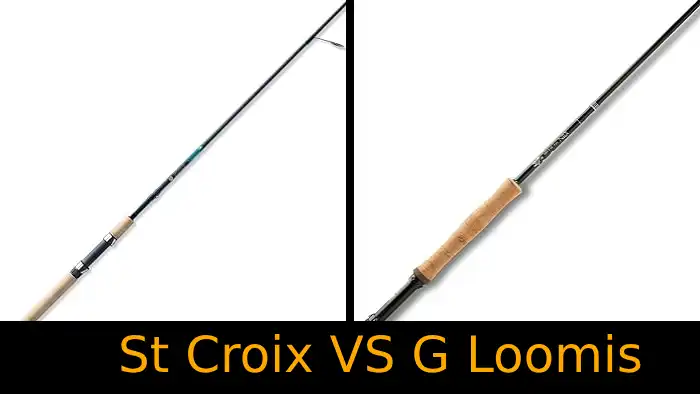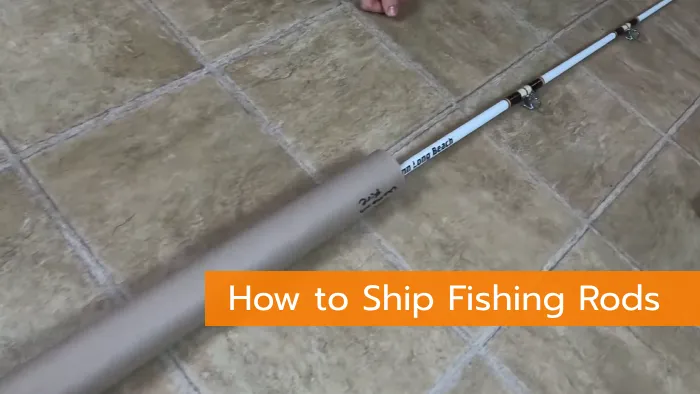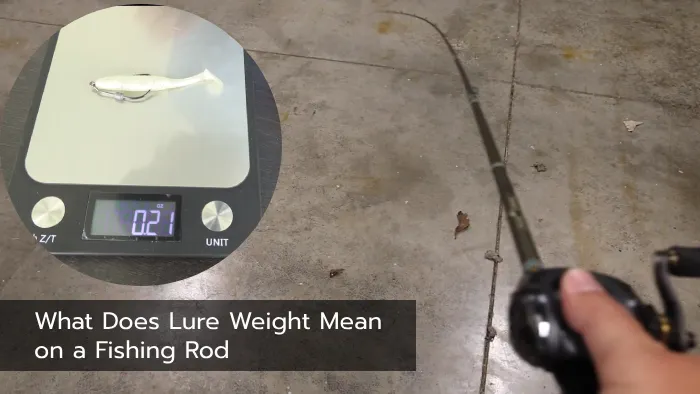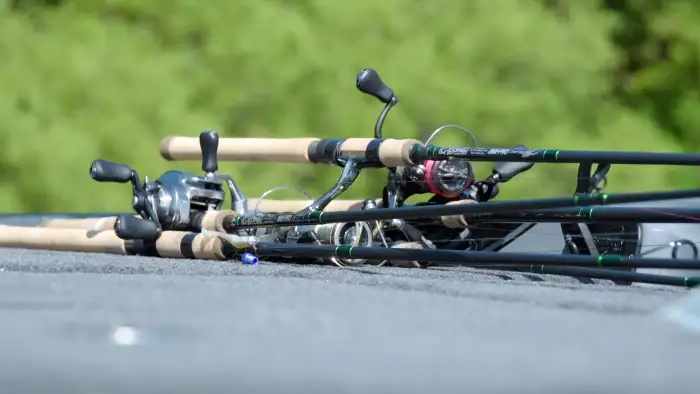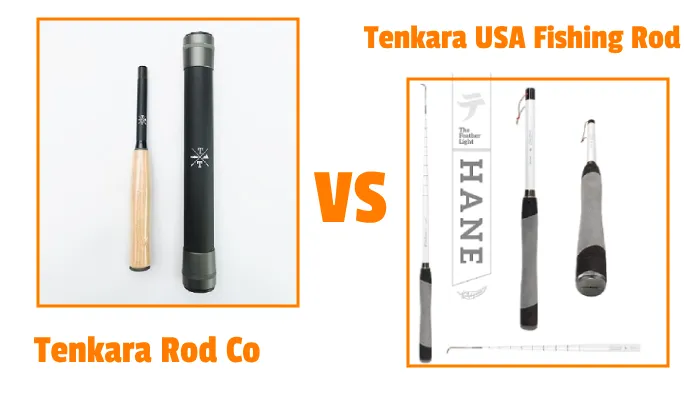St Croix vs G Loomis Fishing Rod: 9 Differences
St. Croix and G. Loomis are two formidable contenders in fly fishing, each renowned for its exceptional fishing rod craftsmanship. The choice of fly fishing rods makes a big difference in how you experience the water.
One key difference lies in the materials they employ. St. Croix leans towards the traditional SCIII carbon fiber, known for its strength and sensitivity.
Meanwhile, G. Loomis pushes the envelope with innovative Spiral X technology, offering ultra-fast recovery and heightened sensitivity.
Additionally, the casting distance can vary, with G. Loomis rods often excelling in this aspect due to their advanced technology.
We’ll explore the differences between St. Croix and G. Loomis fishing rods for fly fishing, helping you navigate the nuanced world of fly fishing gear.
9 Differences Between St Croix and G Loomis Fishing Rod
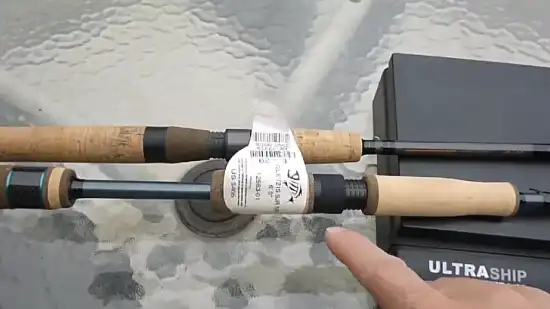
The St Croix and G Loomis fly fishing rods differ in many categories when compared. The following are among them:
- Material
- Rod length
- Design
- Grip
- Rod balance
- Reel compatibility
- Casting distance
- Weight
- Cost
Now check out the differences in detail, so you can select the best fly fishing rod for your needs.
1. Material
Regarding materials, G. Loomis has the edge for its cutting-edge material technology.
They utilize American-made blanks constructed with Spiral X technology, which provides their rods with ultra-fast recovery and heightened sensitivity.
This technology involves wrapping multiple carbon fiber layers around the rod blank at different angles, resulting in increased strength and stiffness.
G. Loomis also incorporates advanced materials into their rods, ensuring excellent performance on the water.
On the other hand, St. Croix relies on the traditional SCIII carbon fiber for their blanks. Although this material is known for its strength and sensitivity, it may not offer the same level of innovation and cutting-edge technology as G. Loomis.
2. Rod Length
To choose the ideal rod length, consider your specific fishing needs and pick a length that suits you best. St. Croix offers a range of rod lengths from 6 feet to over 9 feet, providing anglers with options to match their fishing requirements.
This versatility allows you to adapt to different fishing situations, whether you’re casting in tight spaces or reaching out for longer distances.
On the other hand, G. Loomis offers rod lengths typically ranging from 6 feet to 7 feet 6 inches, covering a wide range of fishing scenarios.
The shorter lengths are great for close-quarter fishing, while the longer lengths excel in situations where distance is crucial.
3. Design
St. Croix emphasizes craftsmanship with their rods handcrafted in Mexico. Their design incorporates proprietary technologies like IPC and FRS, ensuring smooth actions, eliminating weak points, and enhancing strength and durability.
On the other hand, G. Loomis rods are handcrafted in Woodland, Washington, USA, and feature cutting-edge design for advanced performance.
Both brands take pride in their design and craftsmanship, but G. Loomis’s innovative use of technology, like Spiral X, gives them an advantage in this category.
4. Grip
You’ll appreciate the comfortable grip and durability of the agglomerated cork and premium EVA handles on St. Croix rods.
Agglomerated cork is a high-quality material that provides a secure grip, even when wet. It is also resistant to wear and tear, ensuring your fly rod lasts long.
The premium EVA handle adds an extra layer of comfort and longevity, making it ideal for long fishing sessions.
G. Loomis, on the other hand, also offers premium cork handles that provide a comfortable and ergonomic grip.
While both brands use cork handles, St. Croix’s inclusion of premium EVA gives their rods an edge in terms of comfort and durability.
5. Rod Balance
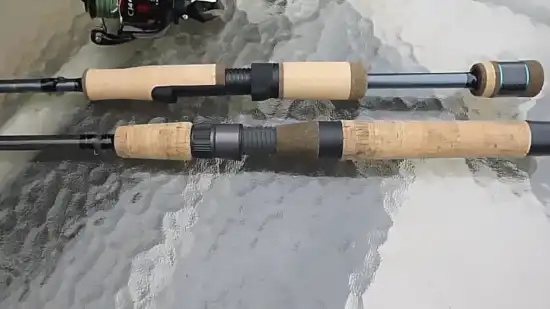
Both brands prioritize balance in their rod designs, ensuring optimal casting accuracy and control. St. Croix and G. Loomis understand that a well-balanced rod is crucial for fly fishing success.
When a rod is properly balanced, it allows for smooth and accurate casting, reducing fatigue and increasing control.
St. Croix’s attention to balance in their rod designs ensures that the weight is evenly distributed throughout the rod, providing a comfortable and responsive feel.
Similarly, G. Loomis rods are also designed with a focus on balance, contributing to their overall performance and casting accuracy.
The balance of these rods allows for effortless and precise casting, making them a great choice for fly-fishing enthusiasts who value accuracy and control.
In this category, both brands excel, making it challenging to determine a clear winner.
6. Reel Compatibility
When choosing a reel for your St. Croix or G. Loomis rod, it’s important to consider compatibility with your preferred reel type.
Both St. Croix and G. Loomis rods are designed to be versatile and compatible with a wide range of reel types, ensuring that you can pair your rod with your preferred reel without any issues.
Whether you prefer a spinning reel, baitcasting reel, or fly reel, both brands offer excellent compatibility options. St. Croix rods are specifically engineered to accommodate different reel types, allowing you to choose the reel that best suits your fishing style.
Similarly, G. Loomis rods are designed to be compatible with various reel types, so you can choose the reel that works best for you.
With both brands, you can rest assured that your fly rod and reel will work seamlessly together, enhancing your overall fishing experience.
7. Casting Distance
To maximize your casting distance, it’s crucial to consider the design and technology of the rod you choose.
When comparing St. Croix and G. Loomis fishing rods, G. Loomis has the upper hand in this category.
Their Spiral X technology is specifically engineered to enhance casting distance significantly.
The spiral wrap construction of the rod creates a stronger, more stable blank that allows for greater energy transfer during the casting process.
This results in increased line speed and improved accuracy, ultimately leading to longer and more precise casts.
St. Croix, while still offering respectable casting distances, does not have the same level of technology dedicated to maximizing casting performance.
Therefore, if casting distance is a priority for you, G. Loomis fishing rods would be the recommended choice.
8. Weight
The weight of St. Croix and G. Loomis rods can vary depending on the specific model within each brand’s lineup.
St. Croix is well-known for its emphasis on lightweight construction, with their fishing rods typically weighing around 2.7 ounces.
This reduced weight helps to minimize angler fatigue during long fishing sessions. However, it’s important to note that the actual weight may differ among the various models offered by St. Croix.
On the other hand, G. Loomis also prioritizes reduced weight in their fishing rods, with many models weighing approximately 3.75 ounces. Like St. Croix, the exact weight can vary based on the specific G. Loomis fly rod model.
Although St. Croix tends to weigh slightly less than G Loomis, with an average weight of approximately 2.7 ounces as opposed to 3.75 ounces, it is crucial to consider the specific weight variations within each brand’s lineup.
9. Cost
If you’re looking to find the best value for your budget, consider the cost of St. Croix and G. Loomis rods.
St. Croix rods offer a wider range of price points, making them more accessible to anglers with varying budgets. They provide good value for the quality and features they offer.
On the other hand, G. Loomis’s rods tend to come at a higher price due to their advanced technology and American-made craftsmanship.
While they may be more expensive, they offer cutting-edge features that can enhance your fishing experience.
Ultimately, the cost of both St. Croix and G. Loomis rods should be weighed against your budget and the specific features you are looking for in a fishing rod.
St. Croix vs. G. Loomis: Which Fishing Rod Brand Is the Better Choice?

When choosing between St. Croix and G. Loomis for fly fishing, you’ll have to consider which brand better meets your specific needs and preferences.
St. Croix offers diverse options and exceptional craftsmanship, catering to various budgets. Their rods are known for their durability and versatility, making them suitable for both beginners and experienced anglers.
On the other hand, G. Loomis is renowned for its advanced technology, such as Spiral X, which enhances performance, casting distance, and sensitivity. Their rods are designed to provide superior control and accuracy, making them a favorite among professional fly fishers.
Ultimately, the choice between St. Croix and G. Loomis depends on your individual requirements, such as the materials used, casting distance, and budget.
The majority of people, however, prefer St Croix. St. Croix is widely used to catch trout and bass using fly fishing techniques in Virginia.
It’s advisable to test and compare specific models from both brands to find the one that best suits your fly fishing style and objectives.
What is the recommended maintenance for St Croix and G Loomis fishing rods?
To ensure the longevity and optimal performance of your St. Croix and G. Loomis fishing rods, make sure that you clean them thoroughly after each use. This will help remove any saltwater or debris that may have accumulated.
Start by rinsing the rod with freshwater, paying attention to the guides and reel seat where saltwater and debris tend to build up.
Use a soft cloth to gently wipe down the entire rod, removing any remaining residue.
After cleaning, store the fly rods in a protective sleeve or case to prevent accidental damage.
Regularly inspect the guides for any signs of damage, such as cracks or bent frames, and address these issues promptly.
Avoid exposing the rods to extreme temperatures or high-impact situations that could harm the rod blank or guides.
Can you repair a broken fly fishing rod or replace it entirely?
If you find yourself with a broken fly fishing rod, you may wonder if it’s possible to repair it or if you should replace it entirely. The answer depends on the extent of the damage.
Minor issues like damaged line guides, a broken rod tip, or a cracked ferrule can often be fixed by a professional rod builder or at a tackle shop. These repairs typically involve replacing the damaged components with new ones.
However, if the rod has a complete break or a large crack along the main shaft, indicating significant structural damage, repairing it may not be feasible. In such cases, it’s usually more practical to replace the rod.
Fishing with a severely compromised rod can lead to further problems and reduced performance, so assessing the damage and making the right decision is important.
How long is the warranty on St. Croix rods?
The warranty on St. Croix rods is not a lifetime warranty anymore. St. Croix Rods has transitioned from a lifetime warranty to a 15-year warranty period.
This means that any rods previously indicating a lifetime warranty now fall under the 15-year warranty timeframe.
This change should be kept in mind when considering St. Croix rods, and to check the specific warranty details for the model they are interested in to understand the coverage period and terms.
Complete Your Fly Fishing Journey with St. Croix and G. Loomis Fishing Rods
The decision as to whether to use a St. Croix or a G Loomis fly fishing rod ultimately depends on your preferences and fishing style. Both brands offer high-quality rods with their own unique features and benefits.
You need to consider rod action, sensitivity, and durability factors. These aspects will greatly impact your overall fishing experience and success. Each brand may have different options, so it is essential to research and test different models to see which one suits you best.
Proper maintenance is also crucial for prolonging the lifespan of your rod. This includes regularly cleaning and inspecting your rod for any signs of damage.
While repairs can be possible, replacing a broken fly fishing rod is advisable if the damage is significant. Trying to fix a severely damaged rod may compromise its performance and reliability.

